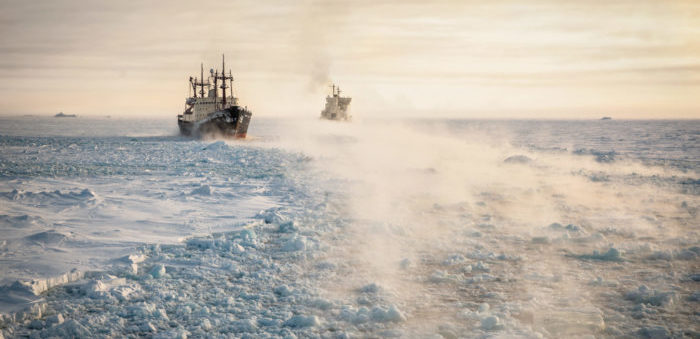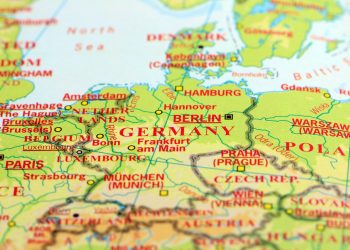Russia is considering of attracting more shippers to transmit their products through the Northern Sea route, by launching a state-run container ship operator, which will cover any risks linked with transporting international cargoes via the Arctic’s icy waters, including possible delivery disruptions and higher insurance payments.
Russian President Vladimir Putin is looking for additional ways on making the NSR more attractive, given that the route is still a challenge for the majority of shippers due to its weather conditions.
Russia’s goal is to make the Arctic a more appealing shipping route in comparison to the Suez Canal, as although Arctic export of liquefied natural gas via the Northern Sea Route has already lured investors above the Polar Circle, shippers of other products remain reluctant to make the detour from the Suez Canal toward the Arctic due to multiple risks.
Today, to transmit a cargo through the NSR, a shipping company has to deploy an ice-class vessel or an icebreaker and to pay insurance costs more than twice those for the Suez Canal, according to Bloomberg.
Moreover, Russia’s Deputy Minister of the Far East and Arctic Development Alexander Krutikov commented that according to the plan they are now considering, the state will pay for the Arctic exposure and the shippers will cover the remaining costs themselves.
If the plan is implemented in the future, the state container ship operator will be responsible for transporting cargoes across the NSR. The national ship operator should be responsible for accompanying the vessels for a decade, minimum; Later on, shippers will be able to fully understand the infrastructure needed for the Arctic and Russia will stop covering the Arctic exposure and make the route commercial.
Bloomberg also refers to the cost of transporting a Twenty-Foot Equivalent Unit, a standard measure of a ship’s cargo capacity commonly known as TEU, via the Northern Sea Route, which could be around 36% higher than via the Suez Canal, following a 2014 presentation made by Tuomas Kiiski, a research manager at Finland’s University of Turku.
Today, international transit accounts for just a fraction of total cargo flows along the Northern Sea Route. The bulk of the 20.2 million tons of cargo which were shipped via the route last year was LNG from Novatek PJSC’s Yamal LNG plant and crude from Gazprom Neft PJSC’s Novoportovskoye field. By 2024, Russia aims to increase shipments via the Northern Sea Route to as much as 80 million tons per year.
To implement the plan, Russia will have to ‘get used to’ the Arctic conditions, as for the time being it is possible to navigate through the NSR for four months of the year.
During the international Arctic Forum in April, Putin stated that “The task is to make the Northern Sea Route safe and economically viable for shippers, attractive both in terms of quality and price”.
Despite plans and future goals, the project is still surrounded by doubt, as firstly Russia’s think-tank Skolkovo has to complete research on potential infrastructure and budget costs by the end of this year. The results of the research will then be discussed and updated for another half a year, and the final decision on whether the project is needed or not is up to Russia’s leadership, Krutikov said.
Krutikov concluded that “the overall development of the Northern Sea Route is a project, which will develop at least 100 years given its scale.”
On the contrary to Russian aspirations on taking full advantage of the NSR, shipping companies as MSC, CMA CGM and Hapag Lloyd announced that they will not sail in Arctic in protection of the environment and in efforts of reducing shipping’s harmful environmental impact.






























































